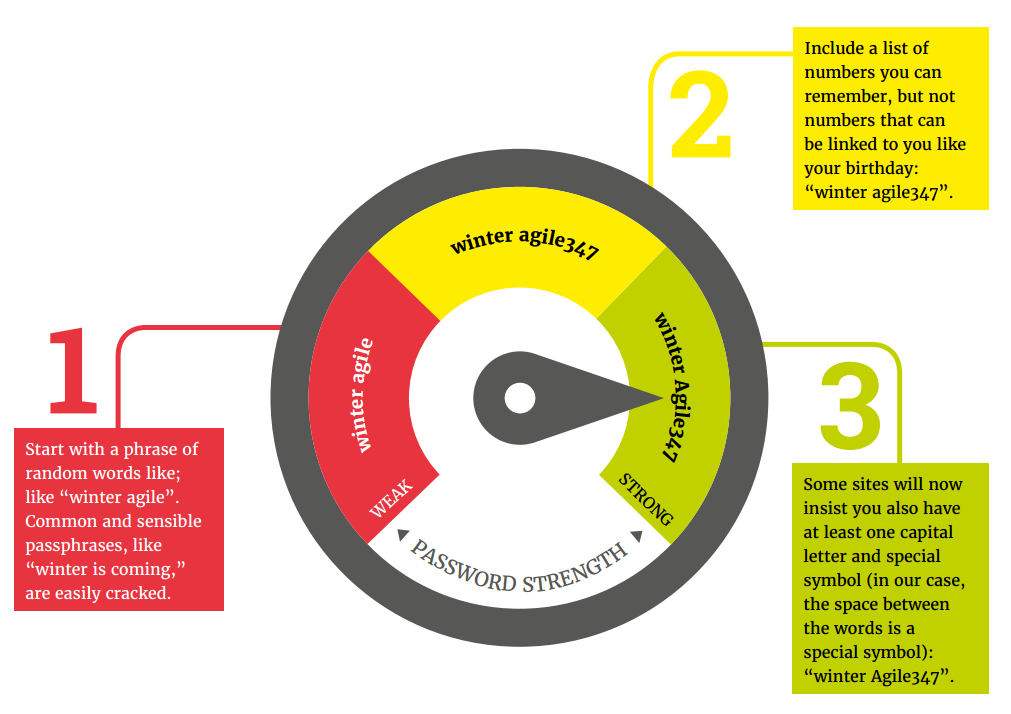How to create robust passwords as your first line of digital defense.


How to create robust passwords as your first line of digital defense.

With identity theft becoming too common, there are two things you need to keep yourself safer online: strong passwords that are easy to remember, and unique passwords that aren’t reused from site to site. Here’s how to do both.
USE PASSPHRASES TO MAKE PASSWORDS
You’ll need a way to create a password you can remember, and one way to do that is by using a passphrase.

USE WEBSITE NAMES TO MAKE UNIQUE PASSWORDS
Now that you have a base passphrase, here’s how to make unique passwords for each site.
A. Add the first two to four letters of the website to finish your password. For example, to log into Facebook, your combined password will be: “winter Agile347fac”.
B. You can also use the last two to four letters: “winter Agile347ook”.
C. And you can insert them into your passphrase anywhere you want, or even add capital letters: “winterFac Agile347”.
D. The key is to always stick to the same strategy so you can remember your passwords. If you use the first three letters, always use the first three. If you add them at the end, always add them at the end: “winter Agile347HWM”.
PASSWORD CHEAT SHEET
How to create strong passwords
1. Do create long passwords, at least eight to more characters. The longer a password, the harder it will be to crack.
2. Do create passwords you can remember. The best password is useless if you forget it.
3. Do create complex passwords with a mix of letters, numbers, punctuation and symbols. In other words, use the entire keyboard.
4. Do create separate passwords for separate vital accounts.
5. Do change your most important accounts’ passwords regularly.
How not to create strong passwords
1. Don’t use passwords that use your personal information because they can be guessed. For example, your name plus your birthday.
2. Don’t use repeating characters or characters in sequence. For example, QWERTY or 12345.
3. Don’t use common passphrases that can be easily guessed, like “winter is coming” or “let me in”.
4. Don’t use the same password for more than one site, because if one account is hacked, your other accounts can be stolen as well.
5. Don’t email your passwords or store them in an unencrypted document.























